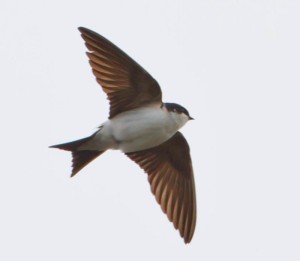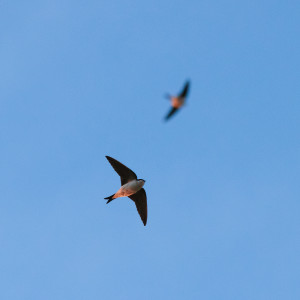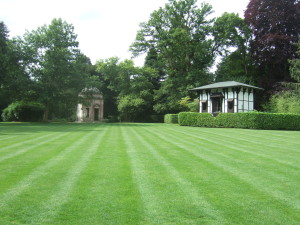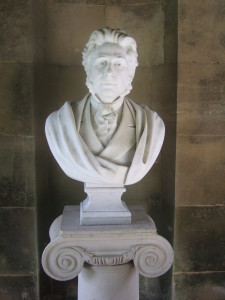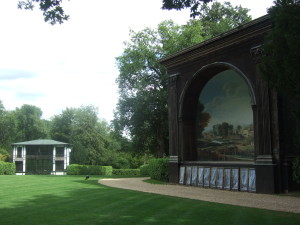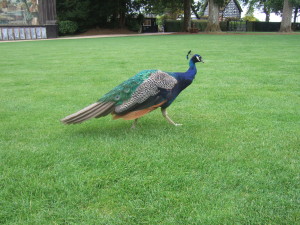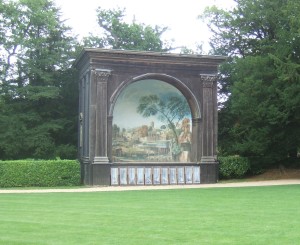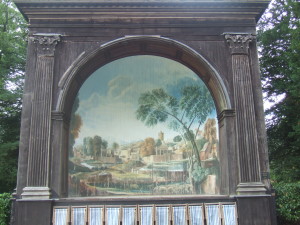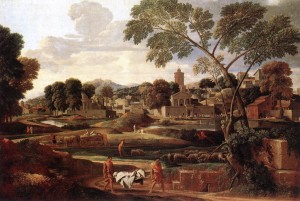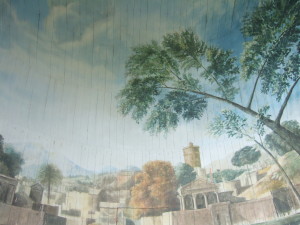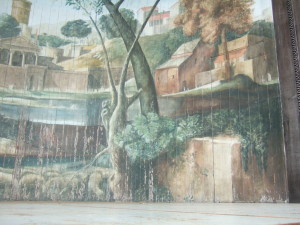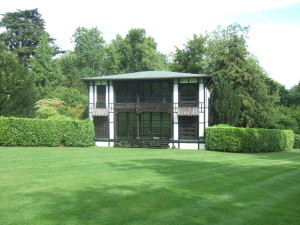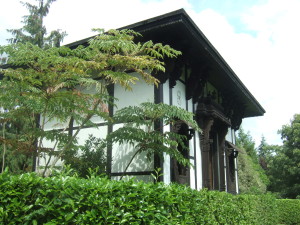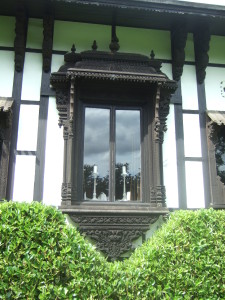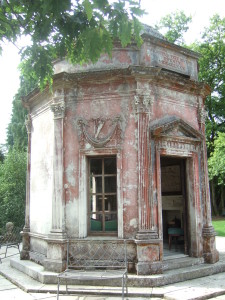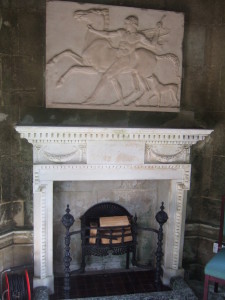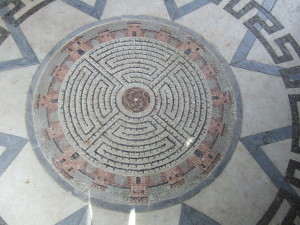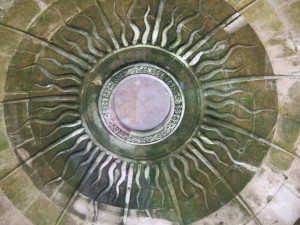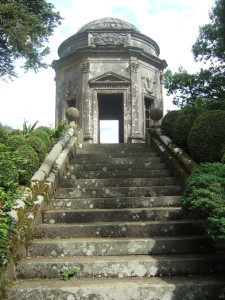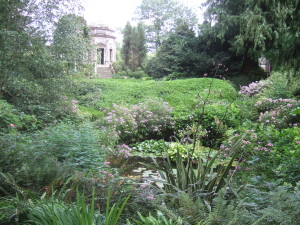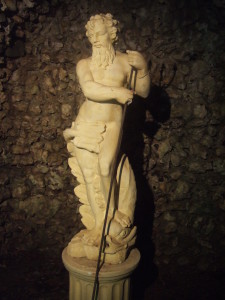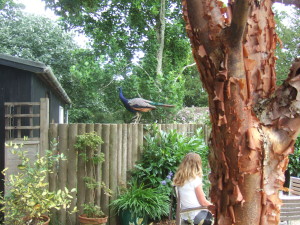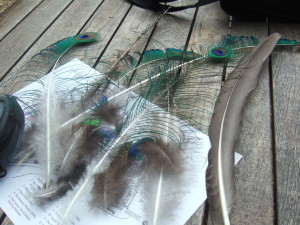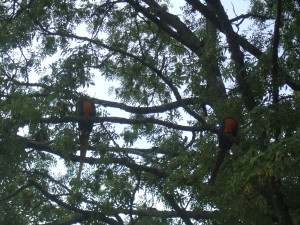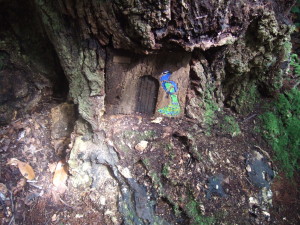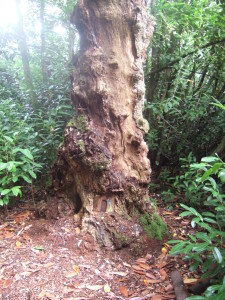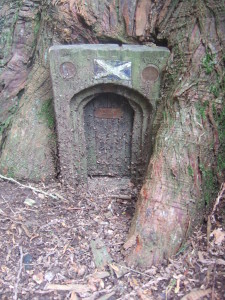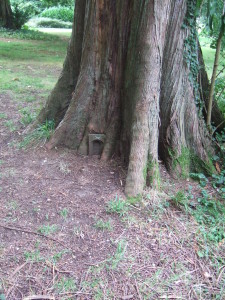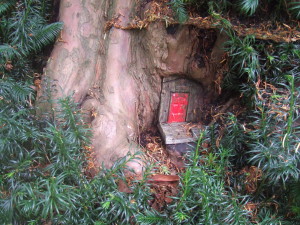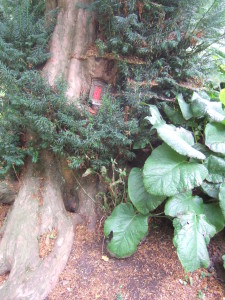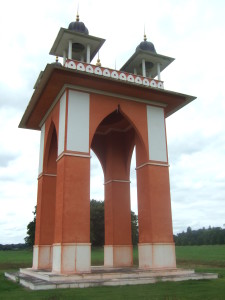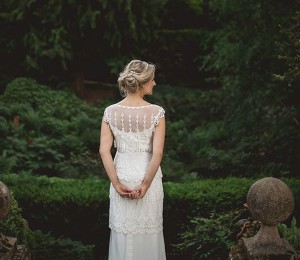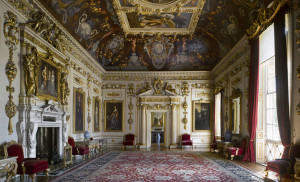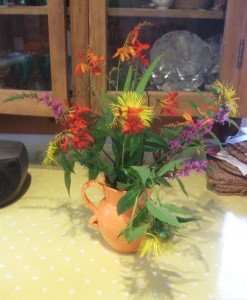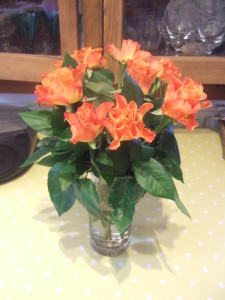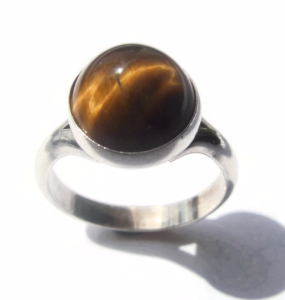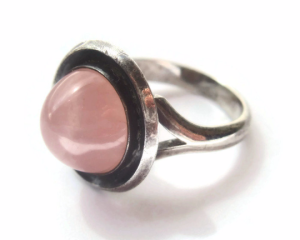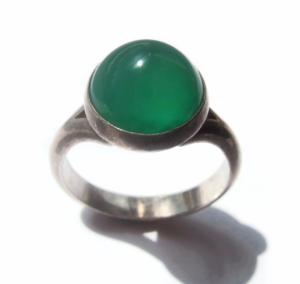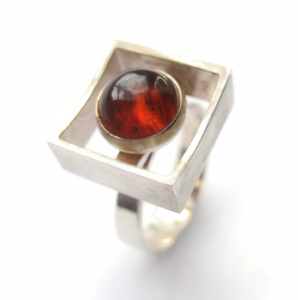The more I study Niels Erik From’s modernist jewellery, the more I like it. I don’t know whether it’s to do with my archaeological career, and the years spent working on finds from various excavations, but I am an inveterate typologiser. I just can’t help it. So I have noticed the variations in the various designs that N E From used in his jewellery.
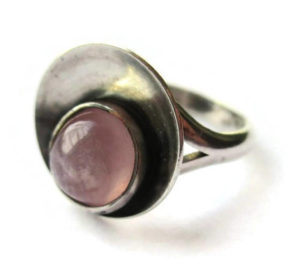
NE From rose quartz ring, with a larger head at 16 mm diameter. For sale in my Etsy shop, Inglenookery: click on photo for details. Design #1.1.1
Usually he made a suite of jewellery types – rings, brooches, earrings, cufflinks, bracelets, necklaces, pendants – and in a variety of themes all riffing on a basic design, and using a range of different semi-precious stones. Putting my Linnaean hat on, I’m going to start with what I rather clunkily call his asymmetrical concave disc design. It probably has a proper name given to it by From, but I don’t know what that is.
The characteristic features of this design are a dished, concave disc of silver, into which is set, asymmetrically and near the edge of the disc, a cabochon semi precious stone (or sometimes a solid silver cabochon) held in a plain collet. The silver around the collet is oxidised to give a blackish effect, to contrast with the rest of the disc, which is untreated and silvery.
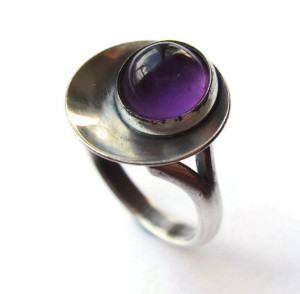
N E From amethyst ring, 15 mm diameter head. NOW SOLD: click on photo for details. Design #1.1.1
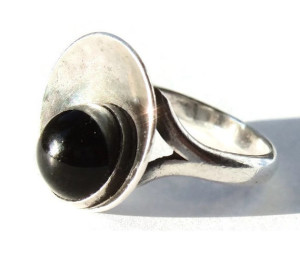
N E From black onyx ring, 15 mm diameter head. NOW SOLD: click on photo for details. Design #1.1.1
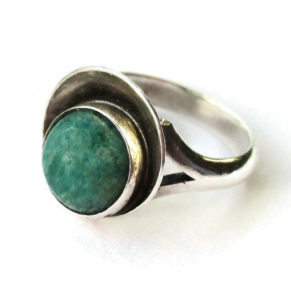
NE From amazonite ring with a smaller diameter head (13 mm). For sale in my Etsy shop: click on photos for details. Design #1.1.1
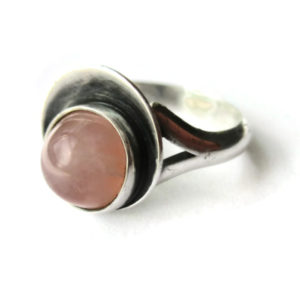
NE From rose quartz and sterling silver ring, this one with a smaller head at 13 mm diameter. For sale in my Etsy shop, Inglenookery: click on photo for details. Design #1.1.1
This basic design is also found in brooches:
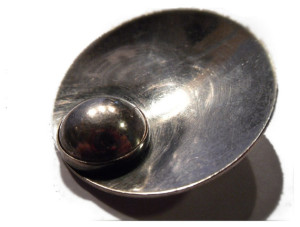
N E From solid silver brooch, for sale by decotini on Etsy: click on photo for details. This design is also occasionally seen as a pendant brooch, with an additional small loop attachment on the back to allow it to be worn as a pendant. 45 mm diameter. Design #1.1.2
and earrings:
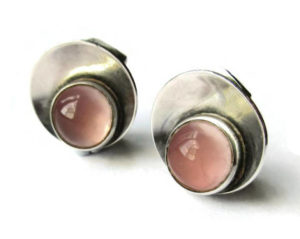
Niels Eric From modernist rose quartz clip on earrings. For sale in my Etsy shop, Inglenookery: click on photo for details. (NOW SOLD). Design #1.1.3
and cufflinks:
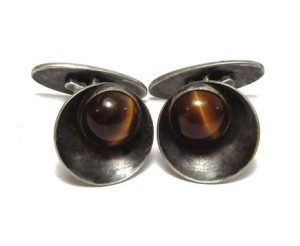
N E From tiger’s eye cufflinks. For sale at vintagecufflinks.com: click on photo for details. Design #1.1.4
and bracelets:
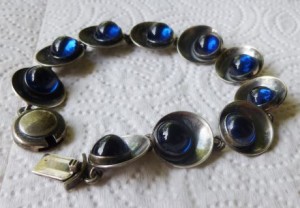
N E From blue glass bracelet. For sale at scandinaviansilver.co.uk: click on photo for details. Design #1.1.5
and necklaces:
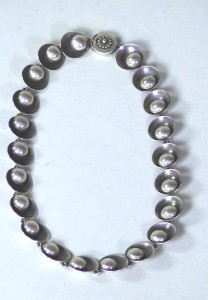
N E From solid silver necklace. Design #1.1.6
and pendants:
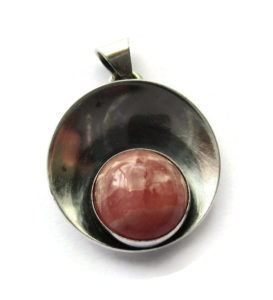
Niels Erik From rhodochrosite and sterling silver pendant. Click on photo for details. (NOW SOLD). Design #1.1.7
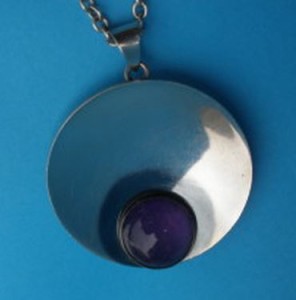
N E From amethyst pendant. For sale at JohnKelly1880.co.uk: click on photo for details. 42 mm diameter. Design #1.1.7Okay, now we’ve got the basics out of the way, let’s start riffing.
Multiple discs in a row:
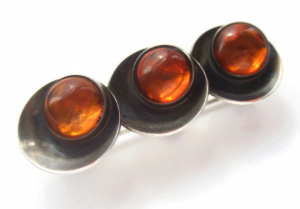
N E From Baltic amber brooch. NOW SOLD: click on photo for details. Design #1.2.1
Multiple discs in an equal sized trefoil arrangement:
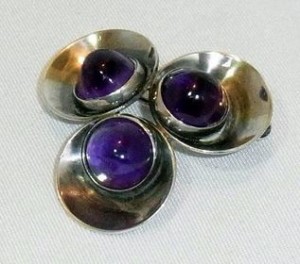
N E From amethyst brooch. NOW SOLD by VintageJewelsNL on Etsy: click on photo for details. Design #1.2.2
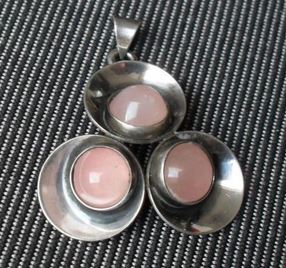
N E From rose quartz pendant. #1.2.3
Multiple discs in an unequal sized trefoil arrangement:
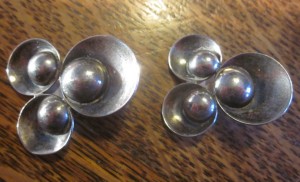
N E From silver earrings. For sale on eBay: click photo for details.
Rings of six discs:
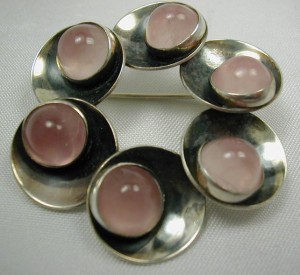
N E From rose quartz brooch. For sale at Estate925 at trocadero.com: click on photo for details. Design #1.2.5
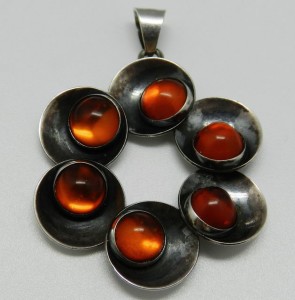
N E From amber pendant. Design #1.2.6
Discs interspersed with open circles:
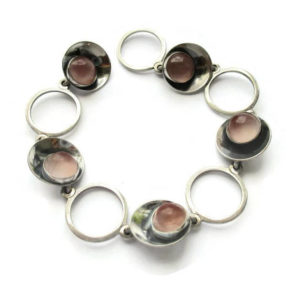
Niels Erik From rose quartz modernist bracelet with five discs. For sale in my Etsy shop, Inglenookery: click on photo for details. Design #1.3.1
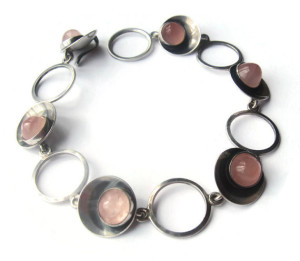
N E From rose quartz bracelet with six discs. NOW SOLD: click on photo for details. Design #1.3.1
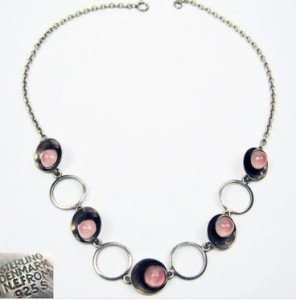
N E From rose quartz necklace. (Possibly a bracelet later converted into a necklace?). Design #1.3.2
Discs with surrounding circles:
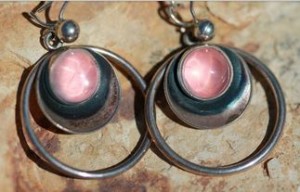
N E From rose quartz earrings. Design #1.4.1

N E From chrysoprase bracelet. Design #1.4.2
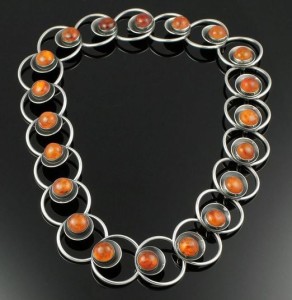
N E From amber necklace. Design #1.4.3
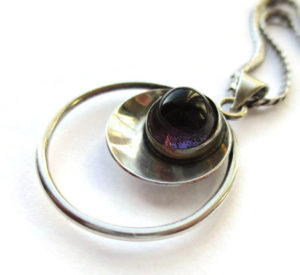
N E From amethyst pendant. NOW SOLD: click on photo for details. Design #1.4.4
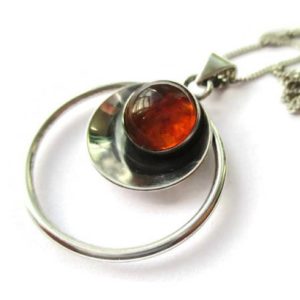
NE From Baltic amber pendant and chain. For sale in my Etsy shop, Inglenookery: click on photo for details. Design #1.4.4
Discs with surrounding double circles:
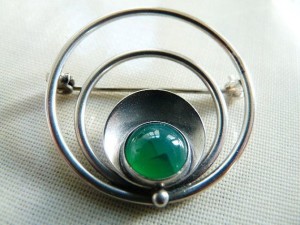
N E From chrysoprase brooch. NOW SOLD by VintageDesignSilver on Etsy: click on photos for details. Design #1.5.1
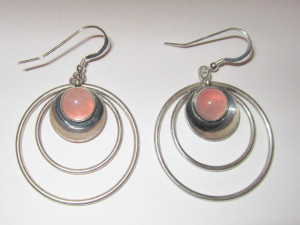
N E From rose quartz earrings. NOW SOLD by PatriciaJon on Etsy: click on photo for details. by Design #1.5.2
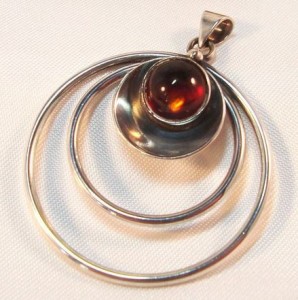
N E From amber pendant. Design #1.5.3
Discs with surrounding ovals:
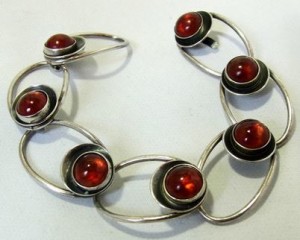
N E From amber bracelet. For sale at vintage-jewels.nl: click on photo for details. Design #1.6.1
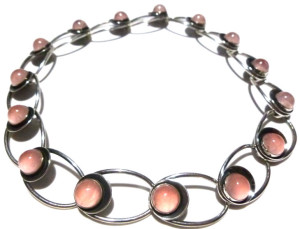
N E From rose quartz necklace. Design #1.6.2
I’m sure there are plenty of other variations I haven’t come across yet. It’s fun looking!
Cabochon semi precious stone types I have seen used in the various designs:
Single arrangements:
Design #1.1.1 (ring): amber, amethyst, chrysoprase/green chalcedony, glass (blue), ivory, malachite, onyx (black), rhodochrosite, rose quartz, solid silver, tiger’s eye.
Design #1.1.2 (brooch): amber, chrysoprase/green chalcedony, glass (blue), rose quartz, solid silver.
Design #1.1.3 (earrings): amethyst, chrysoprase/green chalcedony, rose quartz, solid silver.
Design #1.1.4 (cufflinks): amber, rose quartz, tiger’s eye.
Design #1.1.5 (bracelet): chrysoprase/green chalcedony, glass (blue), rose quartz, solid silver.
Design #1.1.6 (necklace): solid silver.
Design #1.1.7 (pendant): amber (small and large), chrysoprase/green chalcedony (large), rhodochrosite (small), rose quartz (small and large).
Multiple arrangements
Design #1.2.1 (row brooch): amber, rose quartz, tiger’s eye.
Design #1.2.2 (equal trefoil brooch): amber, amethyst, rose quartz.
Design #1.2.3 (equal trefoil pendant): rose quartz.
Design #1.2.4 (unequal triple earrings): solid silver.
Design #1.2.5 (ring of six discs brooch): chrysoprase/green chalcedony, rose quartz.
Design #1.2.6 (ring of six discs pendant): amber
Discs interspersed with open circles
Design #1.3.1 (bracelet): amethyst, rose quartz.
Design #1.3.2 (bracelet): rose quartz.
Discs with surrounding circles
Design #1.4.1 (earrings): rose quartz.
Design #1.4.2 (bracelet): chrysoprase/green chalcedony.
Design #1.4.3 (necklace): amber.
Design #1.4.4 (pendant): amethyst, tiger’s eye.
Discs with surrounding double circles
Design #1.5.1 (brooch): amethyst, chrysoprase/green chalcedony.
Design #1.5.2 (earrings): rose quartz.
Design #1.5.3 (pendant): amber.
Discs with surrounding ovals
Design #1.6.1 (bracelet): amber.
Design #1.6.2 (necklace): rose quartz.
